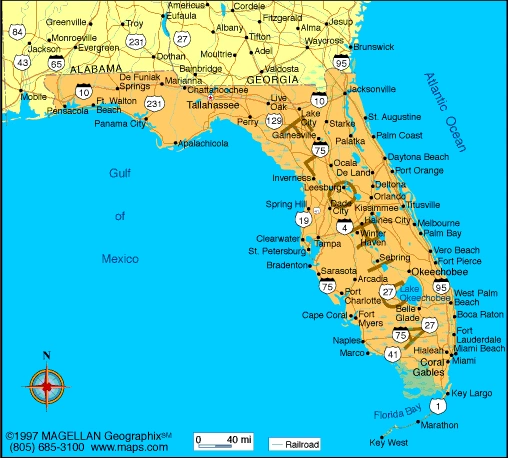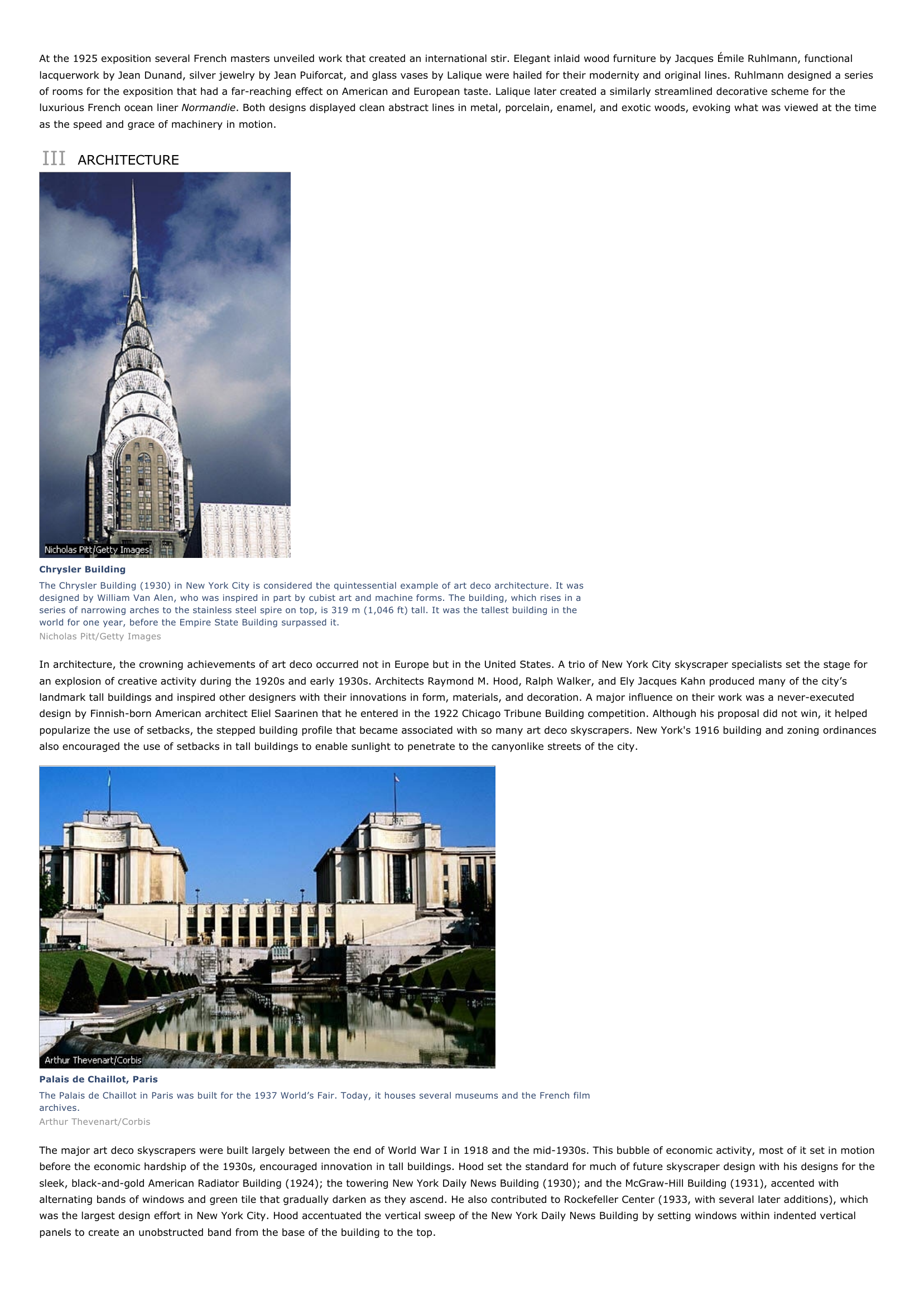Art Deco I INTRODUCTION Art Deco Historic District The Art Deco Historic District is located at the southern end of Miami Beach, Florida.
Publié le 12/05/2013
Extrait du document


«
At the 1925 exposition several French masters unveiled work that created an international stir.
Elegant inlaid wood furniture by Jacques Émile Ruhlmann, functionallacquerwork by Jean Dunand, silver jewelry by Jean Puiforcat, and glass vases by Lalique were hailed for their modernity and original lines.
Ruhlmann designed a seriesof rooms for the exposition that had a far-reaching effect on American and European taste.
Lalique later created a similarly streamlined decorative scheme for theluxurious French ocean liner Normandie .
Both designs displayed clean abstract lines in metal, porcelain, enamel, and exotic woods, evoking what was viewed at the time as the speed and grace of machinery in motion.
III ARCHITECTURE
Chrysler BuildingThe Chrysler Building (1930) in New York City is considered the quintessential example of art deco architecture.
It wasdesigned by William Van Alen, who was inspired in part by cubist art and machine forms.
The building, which rises in aseries of narrowing arches to the stainless steel spire on top, is 319 m (1,046 ft) tall.
It was the tallest building in theworld for one year, before the Empire State Building surpassed it.Nicholas Pitt/Getty Images
In architecture, the crowning achievements of art deco occurred not in Europe but in the United States.
A trio of New York City skyscraper specialists set the stage foran explosion of creative activity during the 1920s and early 1930s.
Architects Raymond M.
Hood, Ralph Walker, and Ely Jacques Kahn produced many of the city’slandmark tall buildings and inspired other designers with their innovations in form, materials, and decoration.
A major influence on their work was a never-executeddesign by Finnish-born American architect Eliel Saarinen that he entered in the 1922 Chicago Tribune Building competition.
Although his proposal did not win, it helpedpopularize the use of setbacks, the stepped building profile that became associated with so many art deco skyscrapers.
New York's 1916 building and zoning ordinancesalso encouraged the use of setbacks in tall buildings to enable sunlight to penetrate to the canyonlike streets of the city.
Palais de Chaillot, ParisThe Palais de Chaillot in Paris was built for the 1937 World’s Fair.
Today, it houses several museums and the French filmarchives.Arthur Thevenart/Corbis
The major art deco skyscrapers were built largely between the end of World War I in 1918 and the mid-1930s.
This bubble of economic activity, most of it set in motionbefore the economic hardship of the 1930s, encouraged innovation in tall buildings.
Hood set the standard for much of future skyscraper design with his designs for thesleek, black-and-gold American Radiator Building (1924); the towering New York Daily News Building (1930); and the McGraw-Hill Building (1931), accented withalternating bands of windows and green tile that gradually darken as they ascend.
He also contributed to Rockefeller Center (1933, with several later additions), whichwas the largest design effort in New York City.
Hood accentuated the vertical sweep of the New York Daily News Building by setting windows within indented verticalpanels to create an unobstructed band from the base of the building to the top..
»
↓↓↓ APERÇU DU DOCUMENT ↓↓↓
Liens utiles
- Theater I INTRODUCTION The Art of Theater BBC Worldwide Americas, Inc.
- Édouard Manet I INTRODUCTION Manet: Tradition and Innovation French impressionist painter Édouard Manet shocked art audiences in Paris with Le déjeuner sur l'herbe (The Luncheon on the Grass; 1863, Musée d'Orsay, Paris), which depicts a nude woman at a woodland picnic.
- Francisco José de Goya y LucientesIINTRODUCTIONFrancisco de GoyaOne of the great masters of Spanish art, painter and illustrator Francisco José de Goya y Lucientes produced works ofconsiderable beauty and power.
- Rembrandt I INTRODUCTION Rembrandt (1606-1669), Dutch baroque artist, who ranks as one of the greatest painters in the history of Western art.
- Indian Music I INTRODUCTION Classical Dance of South India The southern Indian kathakali is a dance drama that dates from the 17th century.








